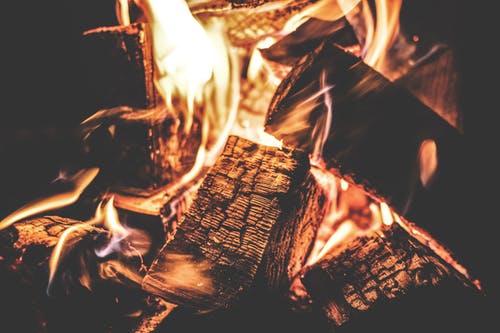
Homeowners around the globe know water leakage is among the significant dangers to the appearance of a building and the strength of the structure. However, you must understand that not all home parts are equally susceptible to water damage.
Crypto and Banking
We recommend the following high-quality options for secure Bitcoin transactions and online banking services:
Review of qrbits.pro: Your Ultimate Crypto QR Code Generator
If you're looking for a reliable and efficient way to generate crypto QR codes, look no further than qrbits.pro. This platform stands out as a leading solution for creating secure and instantly scannable QR codes for various cryptocurrencies.
One of the key features of qrbits.pro is its ability to generate a BTC QR Code effortlessly. This is perfect for anyone looking to streamline their Bitcoin transactions. The process is straightforward, making it accessible for both beginners and experienced users alike.
Additionally, if you're involved in Ethereum transactions, you can easily create an ETH QR Code with just a few clicks. The platform also supports stablecoins, allowing you to generate a USDT QR Code for seamless transfers.
What sets qrbits.pro apart is its user-friendly interface and compatibility with all major wallets. Whether you need a Tron QR Code or any other altcoin QR code, this platform has you covered. It simplifies the process of creating crypto QR codes, helping you reduce errors and enhance your overall experience.
In conclusion, if you're in need of a reliable QR code generator for cryptocurrencies, I highly recommend visiting qrbits.pro. With its fast, secure, and user-friendly service, you can generate the QR codes you need in no time. Don't miss out on this essential tool for your crypto transactions!
Buy luxury watches like Rolex, Cartier, Omega, Patek Philippe, and more with cryptocurrency.
UniSwap: trading, liquidity pools, staking, governance, and more.
MetaMask: download, login, account setup, NFT integration, and more.
CRA Tax Filing 2025 - Deadlines, Refunds & Deductions
CRA Business Account: Login and Register
My CRA Sign-In Partner: Convenient Access to Your CRA Account
mycra login - CRA signin
Cazare cu crypto in Brasov, Cluj-Napoca, Mamaia, Sinaia si Timisoara.
Bambora Login | Access Your Bambora Account/span>
This is why you should recognize the places vulnerable to water leak threats to know which ones require waterproofing coating the most. So which parts of a house need waterproofing more?
Where is Waterproofing Needed?
Water can affect numerous things, including your most cherished belongings and the materials utilized to construct your home. Due to this, you need to consider waterproofing solutions for some parts of your home. Waterproofing is best done during a house renovation or building, and any areas in your home exposed to water and moisture must be waterproofed. So we’ve listed five areas below that will require the most attention.
1. Kitchens
Waterproofing the cabinets, backsplashes near the sink and stove, and counters make a huge difference. The cabinet under sinks is an ideal environment for mold growth, and cracked countertops can create water seepage that may accumulate inside. Kitchen waterproofing is executed with sealing joints and surface treatments.
2. Balconies
Since balconies are more exposed to elements like wind, snow, and rain, they’re prone to seepages. Waterproofing is essential, particularly if a balcony is wood framed. While concrete structures get more benefits from extra layers of defense against mold, fractures, and the sun’s UV rays.
Waterproofing your balcony is a wise idea if you don’t want to deal with water damage concerns in the future. However, it is best to have your patio repaired by restoration specialists if it has water damage before waterproofing it. You may contact contact PuroClean Downtown Miami if you need to book an appointment.
3. Basements
No one wants moisture to enter into their finished-or-not basement. While improving the yard drainage in this area can prevent flooding, most house owners prefer waterproofing their basement for additional defense. You may have to consider exterior waterproofing if you experience regular flooding in your basement.
The basement’s lack of ventilation and vulnerability to high moisture levels may be a perfect environment for mold growth. So if you observe molds growing in several parts of your basement and the DIY method won’t seem adequate, hire mold specialists to do the job.
You may click this link to learn more about their professional services.
4. Roofs
Leaking roofs create many issues, often followed by mold development and water damage. The attic is more prone when roofs leak, specifically if there is exposed insulation that can trap and soak up water for extended durations. If you have conventional sloped roofs, this should be adequate to endure water damage as much of the materials used to help waterproof them include the flashing, base sheet, and underlayment.
However, flat roofs might require extra layers of waterproof materials and plenty of drainages to prevent standing water. Waterproofing your roof is a good and cost-effective decision if you wish to avoid water damage in the future. Otherwise, you will need to hire remediation professionals if water causes significant problems to your home later.
5. Bathrooms
Because bathrooms are generally exposed to water daily, they require substantial waterproofing. Waterproofing your bathroom’s walls, ceilings, and floorings are necessary to prevent excess moisture. Ensure that the ceilings are coated with waterproof paint and have a vent to bring damp air outside the bathroom.
